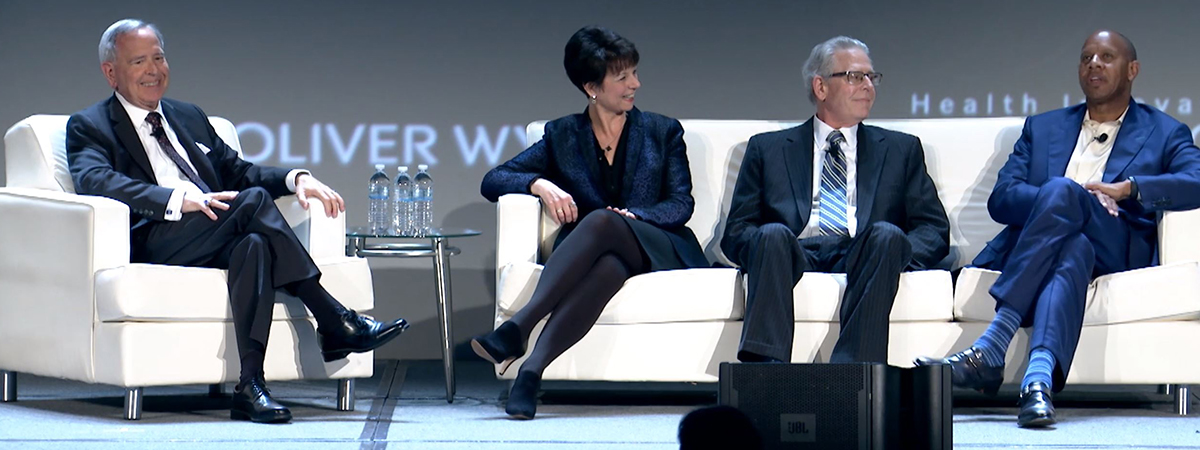Editor's Note: As the Oliver Wyman Health team prepares for this Fall's Oliver Wyman Health Innovation Summit in Chicago, we continue to look back on last year’s executive takeaways to assess healthcare’s ongoing journey towards progress. In this interview from the 2018 Oliver Wyman Health Innovation Summit in Dallas, three healthcare leaders took the main stage to discuss with moderator W. Stephen Love what healthcare's evolution means for US hospitals, health plans, those who run them, and those who successfully avoid running them into the ground.
Memorable Moments
W. Stephen Love
- "Here in Dallas county, we're not proud of this, but 30 percent of children live in poverty. In the state of Texas, unfortunately, we have the highest uninsured rate in the nation, and unfortunately [this has been the case] for the last 10 years." (19:28)
LaVone Arthur
- "In 2013, Baylor Health Care System and Scott & White merged and created the largest not-for-profit healthcare system in Texas, [Baylor Scott & White Health], which was a wonderful opportunity, [but] it had its challenges, many of which were based on geography. … We cover a geography with a population the size of the state of Georgia [based on the population we serve]. Both organizations had more than 100 years of experience serving the citizens of Texas.” (11:13)
- “Leadership is key – from a governance perspective [like how board and committee members are appointed]. I can’t understate how important it is to ask the hard questions and get the hard answers early.” (12:53)
Barclay E. Berdan
- “Our mission statement is not different from many other organizations like ours – 'Improve the health of the people in communities we serve.' But one of the things we created some time ago is a promise – 'Individuals caring for individuals together.' We spent a lot of time talking about that, and we tied it to our values – respect, integrity, compassion, and excellence. And then we created what we call 'promise behaviors' – a whole series of behaviors related to each of those values. … A promise behavior might be, ‘I will speak up for safety. I will keep [us] safe.’ It’s a way to engage everybody in the organization once a month. I [even] do it at my executive team meetings.” (16:05)
- “Having consistent conversations about how we work, why we work the way we do, and what it means to us, our patients, and our community has really allowed us to be privileged to be ranked very highly as an organization – [We are] number 15 in the country, number one in Texas, and in the top five for 'best places for women to work.' We’re really proud of that, but it really makes [for] a very effective, engaged organization that’s unified around the mission, the vision, the values, and the promise.” (18:12)
Wright L. Lassiter III
- "[As former CEO of the Alameda Health System,] we started setting goals that, from my perspective, created a new vision and sense of excitement for an organization. I felt it was my job to begin crafting a new future, but that meant frankly convincing people who had lived somewhat of a troubled past [at the organization that this] future was possible. We spent a lot of time setting goals we knew we could accomplish, but goals that were loftier than had been set before ... that would lead the organization to a new level of performance. As we began doing that, we started to accomplish things people thought weren't possible." (7:47)
- “I sat down with the medical staff and asked them [three questions]: Why did they all go to medical school? What were their goals for their professional career? Were the things the organization was currently accomplishing in line with their vision of what medicine would be for them? The obvious answer was, 'No,' and 'We aspire to do more.' Then, we began a constructive conversation about what we could do differently. In about three years, we moved that organization from the first percentile to the eightieth percentile in terms of customer engagement and joint commission performance.” (9:13)


